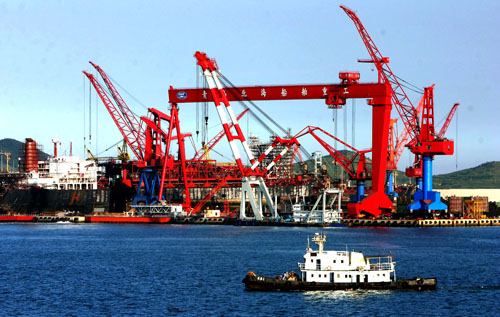超晶格儲氫合金是由[A2B4]和[AB5]亞晶格延c軸方向堆垛而成(圖1(a)),兼具了AB2結構的高容量和AB5結構的高催化性能,被認為是一類極具潛力的新型稀土儲氫材料。然而,該類合金復雜的堆垛模式也為其結構穩定性帶來了不利影響。主要問題是[A2B4]和[AB5]亞晶格在吸/放氫過程中的異步膨脹/收縮,會引起界面產生大量微應變(圖1(b)),從而導致合金結構穩定性急劇下降。
為此,燕山大學韓樹民教授課題組展開了大量研究工作,提出了超晶格儲氫合金結構衰減機理和結構穩定性的系列理論。在課題組前期工作(Journal of PowerSources 300 (2015) 77-86)基礎上,課題組研究發現,在超晶格儲氫合金中,[A2B4]亞晶格體積大于[AB5]亞晶格體積,在吸氫過程中,[A2B4]亞晶格在較低壓力下先于[AB5]吸氫,放氫反之。這種非同步吸放氫導致了兩個亞晶格體積膨脹收縮的不一致,使得其連接界面產生大量應力引起合金超堆垛結構的破壞。課題組利用小原子半徑稀土元素部分取代La選擇性占位在[A2B4]亞晶格中(圖1(d)),通過減小[LaMgNi4]亞晶格體積實現了減小[A2B4]和[AB5]亞晶格異步膨脹/收縮,顯著提高了儲氫合金的循環壽命,為調控超晶格儲氫合金結構提供了新思路和新策略。
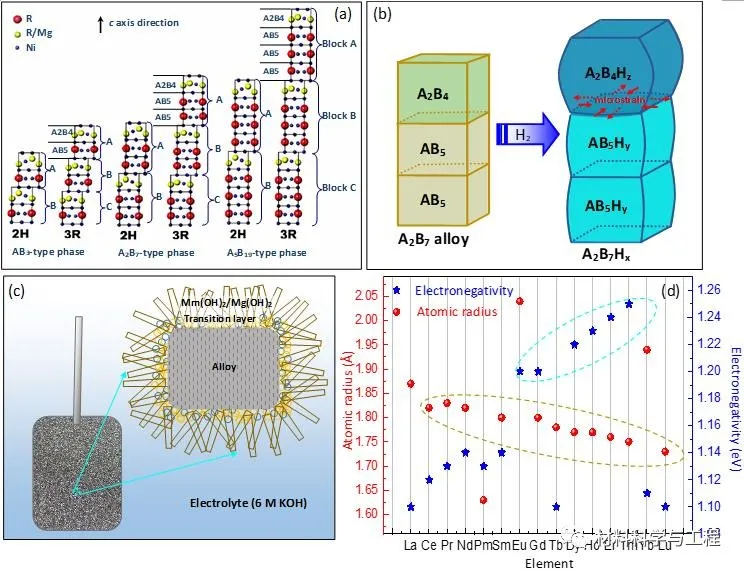
Fig. 1 Stacking structures of superlattice phases (a), microstrain caused by differentvolume expansion between [A2B4]and [AB5] subunits (b), scheme ofoxidation/corrosion during battery cycling (c)and atomic radii and electronegativity of different rare-earth elements (d).
近期,課題組通過第一性原理理論計算(圖2)和結構性能實驗(圖3-9)進一步驗證了上述研究結果,相關研究成果以題為A new strategy for enhancing thecycling stability of superlattice hydrogen storage alloys的研究論文發表在ChemicalEngineering Journal期刊。揚州大學劉晶晶副教授為第一作者,燕山大學韓樹民教授為通訊作者。
論文鏈接:
https://www.sciencedirect.com/science/article/pii/S1385894721009839
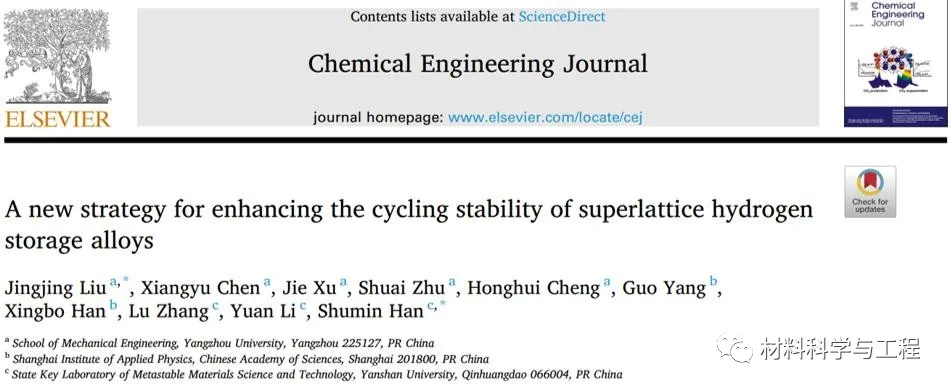
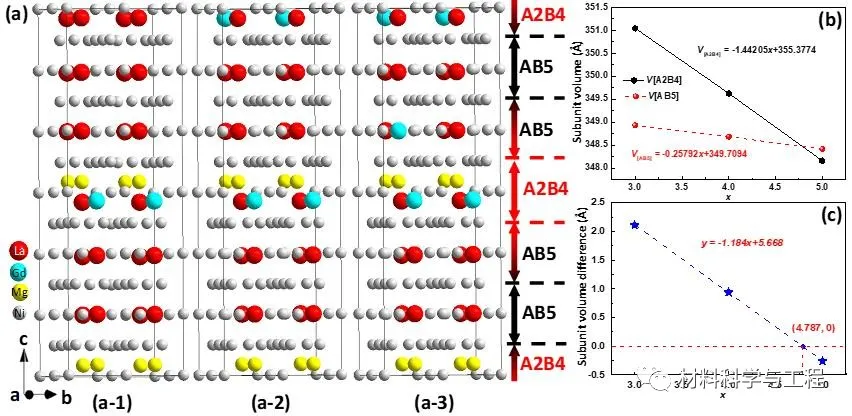
Fig. 2 Simulating models (a1–a3), changing trend of [A2B4]and [AB5] subunit volumes (b)and their difference (c) withincreasing Gd content.
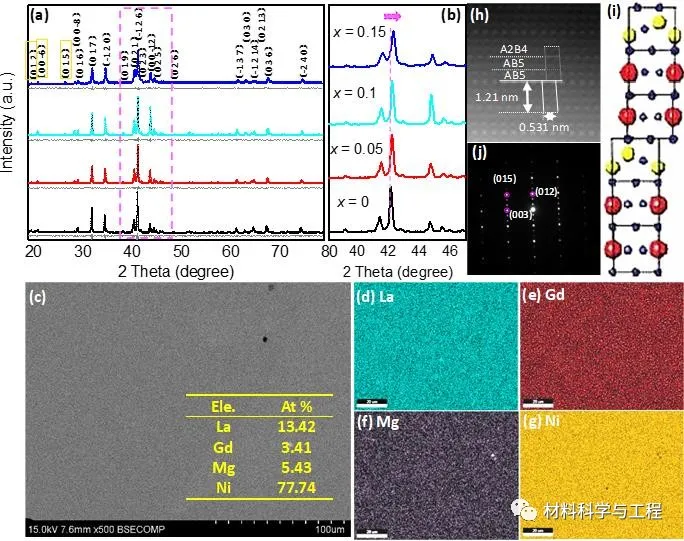
Fig. 3 XRDpatterns in the 2theta range of 20–80 degree (a) and 39–47 degree (b) ofthe La0.75?xGdxMg0.25Ni3.5(x = 0, 0.05, 0.1, 0.15) alloys, SEMimage (c), EDS mappings (d)–(g), HR TEM image (h), stacking mode (i) and SAED pattern (j) of the La0.6Gd0.15Mg0.25Ni3.5alloy.
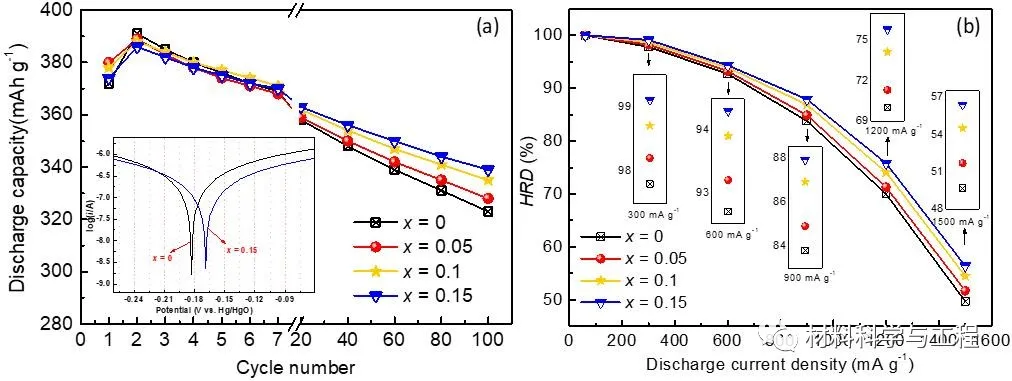
Fig. 4 Discharge capacity plots within 100 cycles (a)and HRD plots at differentdischarge current densities (b) ofLa0.75?xGdxMg0.25Ni3.5(x = 0, 0.05, 0.1 and 0.15) alloyelectrodes.
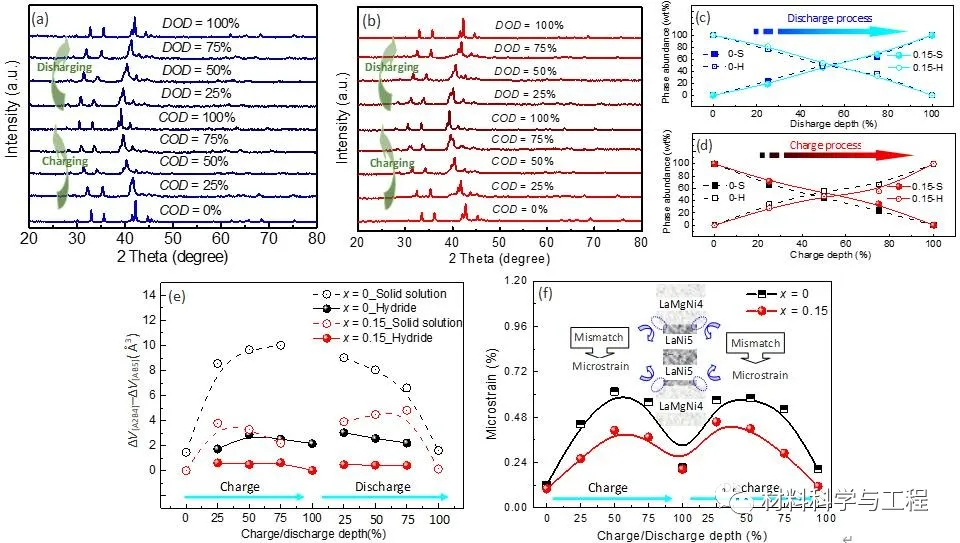
Fig. 5XRD patterns at of x= 0 (a) and x = 0.15 (b) alloys,H-solid solution and hydride phase abundance (c), volume difference between [A2B4] and [AB5]subunits (d) and microstrain in thealloys (e) at differentcharge/discharge stages.

Fig. 6Particle size distribution curves of the x= 0 and x = 0.15 alloy powder beforeand after cycling (a), and SEMimages of x = 0 (b) and x = 0.15 (b) alloy particles after 20 cycles.

Fig. 7XRD patterns of the x = 0 and x = 0.15 alloy powder (a) and HR-TEM images of x = 0 (b) and x = 0.15 alloyparticles (b) after 100 cycles.
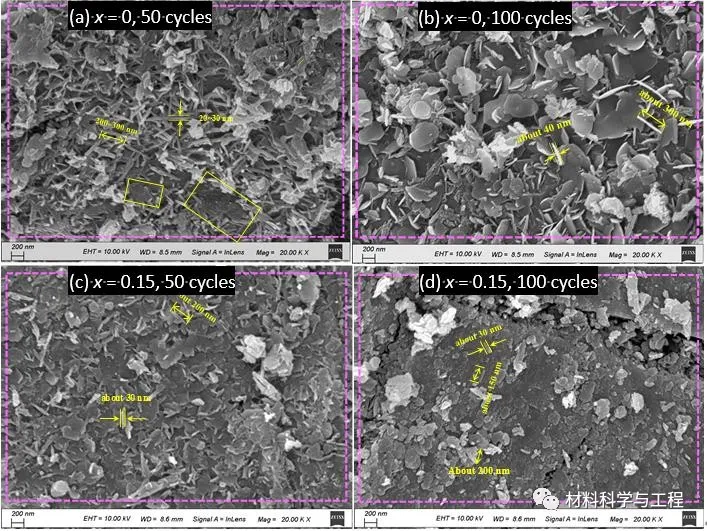
Fig. 8SEM images of the x = 0 alloy after50 (a) and 100 (b) cycles and x = 0.15alloy after 50 (c) and 100 (d) cycles.
免責聲明:本網站所轉載的文字、圖片與視頻資料版權歸原創作者所有,如果涉及侵權,請第一時間聯系本網刪除。

官方微信
《中國腐蝕與防護網電子期刊》征訂啟事
- 投稿聯系:編輯部
- 電話:010-62316606-806
- 郵箱:fsfhzy666@163.com
- 中國腐蝕與防護網官方QQ群:140808414





